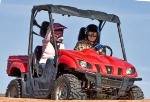
CPSC Moves Toward Public Database of Incidents
The agency announced a Nov. 10 public hearing in Bethesda, Md., to get feedback about the plan, which carries out a provision of the Consumer Product Safety Improvement Act of 2008.
A searchable online database of information on the safety of consumer and other products regulated by the Consumer Product Safety Commission will come one step closer to reality when the commission conducts a public hearing Nov. 10 to get feedback on the idea. Section 6A(a)(1) of the Consumer Product Safety Improvement Act of 2008 directed CPSC to establish the database of incidents and specified that it must be publicly available, searchable, and accessible through the commission's Web site.
The meeting will be available as a webcast with no registration required, according to the CPSC online registration page.
Comments from the public are welcome. The hearing will start at 9 a.m. local time in the fourth floor hearing room of the Bethesda Towers Building, 4330 East West Highway. Requests to make oral presentations and the written text of any oral presentations must be received by 5 p.m. EST Nov. 3. File the requests via www.cpsc.gov/cgibin/dbmeeting.aspx and e-mail the text to [email protected], or mailed or delivered to the Office of the Secretary, Consumer Product Safety Commission, 4330 East West Highway, Bethesda, MD 20814.
On Oct. 22, CPSC announced that the commission had voted to publish an advance notice of proposed rulemaking to address the safety hazards of recreational off-highway vehicles (ROVs) because of a rising death toll associated with them. The CPSC staff's preliminary evaluation indicated ROVs "may exhibit inadequate lateral stability, undesirable steering characteristics, and inadequate occupant protection during a rollover crash," according to the agency, which said the staff reviewed the Recreational Off-Highway Vehicle Association (ROHVA) draft proposed American National Standard for Recreational Off-Highway Vehicles, ANSI/ROHVA 1-200X, "and found preliminarily that it does not adequately address the deaths and injuries associated with ROV rollovers and collisions."
"I have reviewed numerous death and injury reports tied to ROVs, and I believe CPSC can play a vital role in making them safer," CPSC Chairman Inez Tenenbaum said. "While we work on new safety rules for ROVs, I urge all riders and passengers to strap on a helmet, use the seat belt, know the terrain, and never allow anyone under 16 to drive these vehicles."
ROHVA was founded by manufacturers and distributors of these vehicles to promote their safe, responsible use, and it received ANSI accreditation in November 2008 to develop the standard. The association defined an ROV as "a motorized off-highway vehicle designed to travel on four or more non-highway tires, with a steering wheel, non-straddle seating, seat belts, an occupant protective structure, and engine displacement up to 1,000cc." Current models are designed with seats for a driver and one or more passengers; they are sometimes called side-by-sides or UTVs.
ROHVA's ROV safety rules are:
1. Always wear a helmet and other protective gear, use the seat belts, and keep all parts of your body inside the ROV.
2. Never drive on public roads unless the road is part of a designated trail system or except to cross when safe and permitted. ROVs are designed to be operated off-highway.
3. Drive only in designated areas, at a safe speed, and use care when turning and crossing slopes.
4. Never drive under the influence of alcohol or other drugs.
5. Never drive an ROV unless you're 16 or older or have a driver's license. ROVs are not toys.
6. Never carry more passengers than the ROV is designed for, and never allow a passenger who is too small to sit in a passenger seat to ride in the ROV.
7. Read and follow the operator's manual and warning labels.